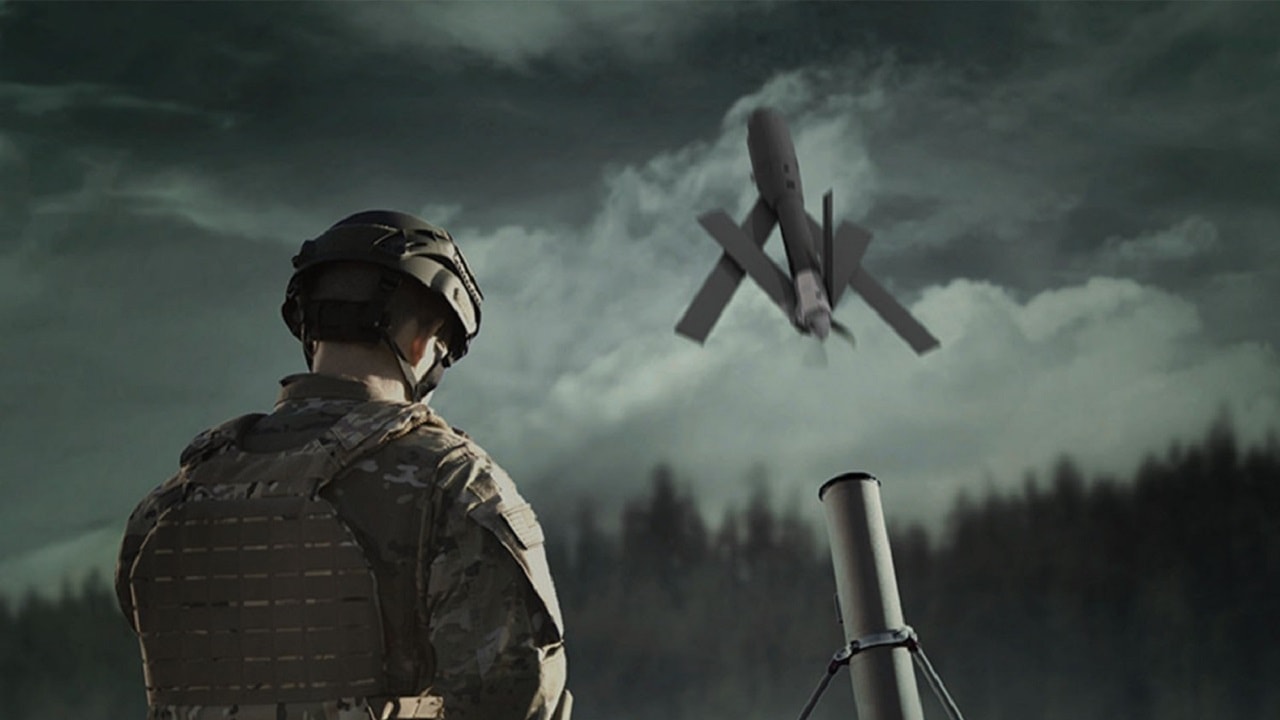Switchblade Suicide Drone On Its Way to Ukraine? American “Switchblade” kamikaze drones could soon knife through the air and eliminate soft and hard targets in Ukraine. President Joe Biden, if the most recent reports are accurate, is sending the weapons to Ukrainian forces. Switchblades are also known as “loitering missiles” or suicide drones and are considered highly accurate. The president may cobble together an $800 million arms package that would include these munitions, two Members of Congress said on March 16. Switchblades are cheaper than other air-to-ground missiles such as the Hellfire that is fired from Reaper drones.
Potent Anti-Tanks or Anti-Personnel Weapon
The Switchblade is versatile – with one model that can target enemy soldiers and another that can go after tanks and armored vehicles. Ukrainian President Volodymyr Zelenskyy had previously requested armed drones from the United States. American arms-manufacturer AeroVironment had originally sold them to U.S. special operations forces.
Defense Contractor Is Ready to Help Ukraine
AeroVironment is serious about helping Ukraine in its war with Russia. A statement on its corporate web site said, “We stand for freedom, and we stand with our allies and sovereign nations in their right to protect their homelands and their very lives when this fundamental right is threatened. Ukraine and our eastern European allies need these solutions now to win against the Russian military and strategically deter future aggression.”
Switchblade is Difficult to Defend Against
Operators program the Switchblade to destroy a target up to 50 miles away. When the weapon is launched it can avoid enemy fire with its cameras and guidance system. Switchblades then can fly around the target for 40 minutes until the fire control mechanism determines it is advantageous to strike. Once the target is engaged the heavier Switchblade 600 drone flies down to paydirt at 115 miles per hour to pierce a tank’s armor. The Switchblade 300 is lighter at 5.5-pounds and can only hover for 15 minutes before it hits troops in the open.
Affordable and Simple to Fire
The Switchblades are tube-launched weapons that can be carried in a rucksack. The remote-controlled smart bombs are easy to use and cost effective with a price of around $6,000 each. They may have been the weapons used by Americans to kill Iranian General Qasem Soleimani in 2020 who was the Quds force commander of the Islamic Revolutionary Guard Corps.
It Could Add to an Already Powerful Arsenal of Donated Weapons
If the Switchblade transfer is made, the Ukrainians will have a potent weapon to supplement anti-tank missiles such as Javelins and NLAW anti-tank missiles plus the Punisher and Bayraktar TB2 drones.
But the Ukrainians could run out of these munitions and aircraft, which is why the Switchblade is needed on the battlefield immediately. The Ukrainian military’s effective use of stand-off missiles against Vladimir Putin’s armored forces has been a significant factor in this war of attrition. The Russian military and intelligence agencies did not foresee the power of the anti-tank missiles. This analysis from 1945 even questioned whether the tank is becoming obsolete.
The Switchblade maybe even more advanced than the Javelin and this has some in the U.S. military establishment wondering if the weapons could fall into the wrong hands. It may be better for the Switchblades to be given to Ukrainian special forces units if the transfer is approved.
Now serving as 1945’s Defense and National Security Editor, Brent M. Eastwood, PhD, is the author of Humans, Machines, and Data: Future Trends in Warfare. He is an Emerging Threats expert and former U.S. Army Infantry officer. You can follow him on Twitter @BMEastwood.

